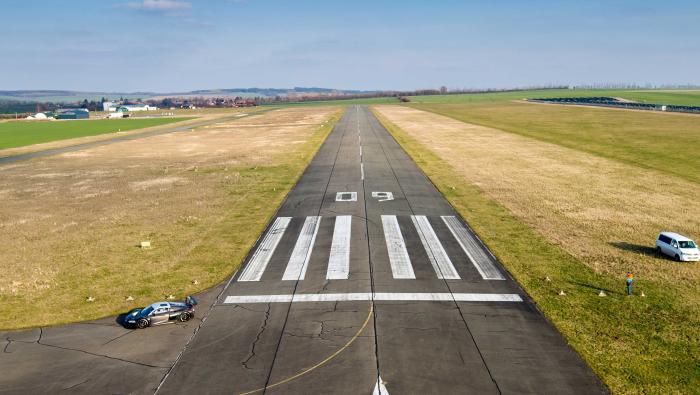As all of us in aviation know, much government, industry, and media time has been spent on the two Boeing 737 Max accidents that took the lives of 346 people in less than a five-month period between October 2018 and March 2019. In addition to so many lives lost, the accidents have called into question Boeing’s safety culture and whether the Federal Aviation Administration’s delegations of authority to manufacturers have limited its ability to perform effective oversight. At the same time, the accidents have shone a harsh light on pilot training in developing countries, with many aviation experts believing that notwithstanding the issues identified with the aircraft’s certification, better-trained pilots would have been able to save the aircraft from their fatal descents. Analyses of these accidents will continue for many months and years. The economic fallout on Boeing and the airlines whose fleets relied heavily on the 737 Max will also continue for months and even years, as will passenger impacts from delayed and canceled flights.
But while the 737 Max story continues to be written, other intractable aviation issues remain that also deserve focused attention by government and industry. For that reason, I was glad to see Canada’s recent Transportation Safety Board (TSB) special report on air-taxi safety issues. The Transportation Safety Board of Canada—officially the Canadian Transportation Accident Investigation and Safety Board—is Canada’s equivalent of the U.S. National Transportation Safety Board. Its mission—like our NTSB’s—is to conduct independent accident investigations and provide safety recommendations. Like the NTSB, it does not assign fault or determine liability for an accident.
Air-taxi accidents continue to be a concern, both in the U.S. and in Canada. The NTSB’s Most Wanted List for the years 2019-2020 includes the entry, "Improve the Safety of Part 135 Aircraft Flight Operations." Because air-ambulance, air-taxi, charter, and on-demand operations are not required to adopt formal safety management systems (as Part 121 operators are) the NTSB recommends “all Part 135 operators should implement safety management systems and flight data monitoring programs that address the unique risks associated with their operations, and the FAA should ensure compliance with standard operating procedures.” As of the latest update, all but one of the specific NTSB recommendations remain open.
Much as the Part 135 safety record remains a concern in the U.S., the same is true in Canada where, according to this latest report, “the air-taxi sector has more accidents and more fatalities than all other sectors of commercial aviation in Canada.” While, of course, there are differences between flying air taxis in Canada and the U.S., the Canadian findings and conclusions might have a bearing on U.S. accidents and are worth considering if you operate an air taxi or work for one.
According to the report, the TSB’s analysis of the period between 2000 and 2014 found that the type of occurrences that resulted in the highest numbers of aircraft fatalities—fixed-wing and helicopter—were flights that “began in visual meteorological conditions but proceeded to a point where the pilot lost visual reference with the ground.” While this is not a particularly surprising finding, what was of particular interest to me was that the pilots in these accidents had a combined average of 5,000 hours of experience. As the TSB concluded, it does not appear that pilot experience is a mitigating factor in preventing these types of accidents. I am familiar with NTSB accident investigations where experienced pilots knew the weather along their route of flight was changing, even changing rapidly, and yet made the fatal decision to take off anyway, whether under company pressure or driven by their own desire to reach the destination.
And talking about experience not necessarily being synonymous with safe operations reminds me of the Gulfstream IV crash five years ago at Hanscom Field in Massachusetts. As I wrote about before, one of the most shocking findings I had ever seen in an NTSB report was that not only had the crew on the fatal flight failed to perform a flight control check before takeoff (and thus took off with the gust lock system engaged) but that it failed to perform complete flight control checks on 98 percent of its previous 175 flights. The pilot-in-command had more than 11,000 hours.
Back to the TSB report. The report further concluded that air-taxi accidents fell broadly into these categories:
- acceptance of unsafe practices (e.g., flying overweight, flying into forecasted icing, not recording defects in the aircraft log, flying with unserviceable equipment, “pushing the weather,” and flying with inadequate fuel reserves)
- inadequate management of operational hazards (e.g., inadequate response to aircraft emergencies, inadequate crew coordination contributing to unstable approach, visual flight rules flight at night, loss of visual reference in marginal weather conditions, scales not available for weight and balance calculations).
While these are broad categories, I think they summarize well safety issues prevalent in so many aircraft accidents I have either worked on or accident reports I have reviewed. Not surprisingly, the report contains numerous recommendations to address these findings. While the recommendations are too numerous to spell out here, I recommend reading the full report for insights that might be of help to your specific operations. Among the many important observations in the report, the role that clients and passengers have in the safety equation is significant and different from their role in other aviation sectors. And this is an area where charter associations and charter travel agents could play a role in educating air-taxi users not to apply undue pressure to pilots to launch a flight they’re uncomfortable with.
While the complete list of recommendations from the TSB is too lengthy to repeat here, there is one I thought was worth highlighting. Not surprisingly, perhaps, the Canadian TSB also recommends that all commercial aviation operators be required to adopt a safety management system. Sound familiar? Indeed, implementing SMS in Part 135 operations is on the NTSB’s Most Wanted List for 2019-2020.









